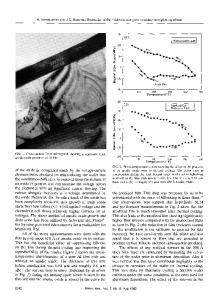Grain Boundary Properties and Grain Growth: Al Foils, Al Films
- PDF / 2,518,174 Bytes
- 12 Pages / 612 x 792 pts (letter) Page_size
- 14 Downloads / 382 Views
N6.6.1
Grain Boundary Properties and Grain Growth: Al Foils, Al Films Katayun Barmak, Wayne E. Archibald, Anthony D. Rollett Department of Materials Science and Eng., Carnegie Mellon University, Pittsburgh, PA 15213 Shlomo Ta’asan, David Kinderlehrer Department of Mathematical Sciences, Carnegie Mellon University, Pittsburgh, PA 15213 ABSTRACT Relative grain boundary energy as a function of misorientation angle has been measured in cube-oriented, i.e., fiber-textured, 120 µm-thick Al foil using orientation imaging microscopy and a statistical multiscale method. The energies of low-angle boundaries increase with misorientation angle, in good agreement with the Read-Shockley model. The relative energies of high-angle boundaries exhibit little variation with misorientation. Examination of the grain structure of fiber-textured, 100 nm-thick Al films annealed at 400 °C for 0.5-10 h shows 5 and 6 sided grains to be the most frequent, and the fraction of four-sided grains to be significant. The mean number of sides is slightly lower than the expected value of 6 for twodimensional structures. Of lognormal, gamma and Rayleigh distributions, gamma gives the best fit to the grain size data in the films; however, the difference between gamma and lognormal is small. Grain growth is not self-similar and stagnates after one hour of annealing. The evolution of the grain size distribution with time indicates that the growth stagnation in the films is neither consistent with boundary pinning by grooving nor with conventional treatments of solute drag. Surface, elastic-strain and plastic-strain energy driving forces do not play a significant role in the grain growth and the subsequent stagnation since the films are strongly textured even in the asdeposited state. The steady-state distributions of reduced grain area for two-dimensional, Monte Carlo and partial differential equation based simulations show excellent agreement with each other, even when anisotropic boundary energies are used. However, comparison with experimental distributions reveals a significantly higher population of small grains in the experiments.
INTRODUCTION To tailor the grain structure of materials, it is of interest to develop predictive models of grain growth that incorporate experimentally determined boundary properties and are validated against experimentally characterized grain structures. To this end, we have made use of cubeoriented 120 µm-thick foils of Al and electron back scatter diffraction in combination with a statistical multiscale method to determine the relative boundary energies of 890 boundaries as a function of misorientation angle. Grain growth has been examined in 100 nm-thick films of Al using transmission electron microscopy. For each annealing time, the distribution of grain area, grain size, dihedral angle and the number of sides for between 737 and 2022 grains has been determined. The experimental grain structures are compared with those obtained in twodimensional (2D) simulations of grain growth that use both the Monte Carlo Potts (M
Data Loading...











